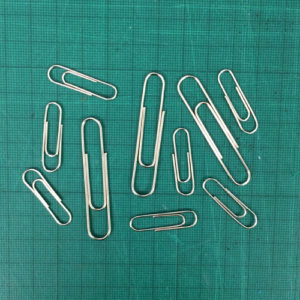I am a printmaker, natural dyer and forager. My work is all about nature: from doing prints and illustrations of birds and leaves, to dyeing using
plants I’ve grown or foraged. I run workshops teaching printmaking on fabric and indigo dyeing. I also run wild food walks.

Describe your process.
My process is quite meditative. I clear my mind of all thought, put pen to paper and see what happens. I work spontaneously, doing lots of quick drawings
and paper cuts, repeating images again and again, like a human photocopier.

How and where did you learn to print?
I first learnt to print with my mother, Vanessa Arbuthnott. I still use the printing methods she taught me when I was four! Then, I loved doing prints
of fish. I haven’t changed much, just switched from fish to birds!
Why Printing?
I enjoy the quick and clean results you can get from screen printing when using such simple materials. I love craftsmanship, hand making beautiful things
that have a function and will be loved, endured and repaired over time. The simplicity of printmaking makes it accessible to people who are not creatively
confidant, this makes it fun to teach.

Where do you work?
I have a studio at In Bristol Studios, sharing with lots of interesting community artists and makers. We share a big print room. I also
do lots of drawing from home as it is quiet there.

Describe a typical day in you studio.
I have very varied days. No two days are the same. I am most productive in the early morning when I can clear my head, not think too much about
what I am doing and be spontaneous. Some days, I teach from my studio in Bristol or in Cirencester. Most days, I go out gathering wild food, go to
the natural dye garden to do some harvesting or weeding, or go for a swim in the river. I spend a lot of time outside.

How long have you been printmaking?
Since I was four! So twenty two years on and off. However it is in the past four years I have really gotten into it.

What inspires you?
As a forager, I get a lot of inspiration from the wild food I gather throughout the year. I am currently developing a range of fabric designs inspired
by wild edible spring plants such as cleavers, nettles and herb Robert. I am always inspired by the freedom and movement of birds. Lately I have been
exploring the process of dyeing with organic indigo. The chemistry of the vat, the pureness and depth of the blue is mesmerising.

What product/tool could you not be without?
I love a fresh, sharp scalpel and a stack of paper for cutting out paper stencils for screen printing.

Where can we see you work? Where do you sell?
I print and create designs to commission. I run regular printmaking and natural dyeing workshops which are bookable via my website floraarbuthnott.com I design for my mother too – you can find my ‘Bird Hop’ design on her website: vanessaarbuthnott.co.uk.

What will we be seeing from you next?
I am running printmaking workshops and organic indigo workshops an shibori workshops this autumn in Bristol and Cirencester.

Do you have any advice for other printmakers and creatives?
Print first, think later. Trust you instincts and have fun with it.
See more of Flora’s work on the following sites:
facebook.com/thenaturaldyegarden/
facebook.com/simpleprintmaking/
instagram.com/simpleprintmaking/
instagram.com/naturaldyegarden/




































